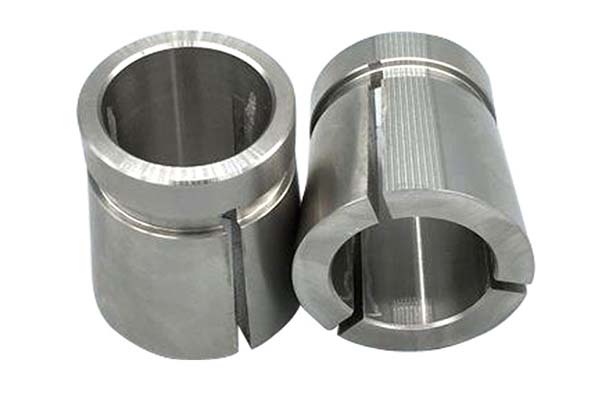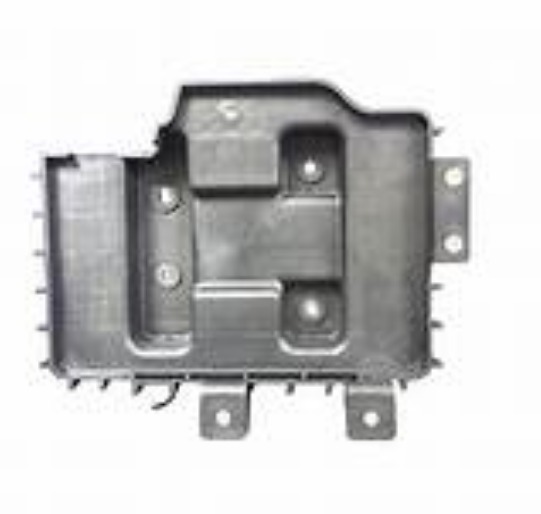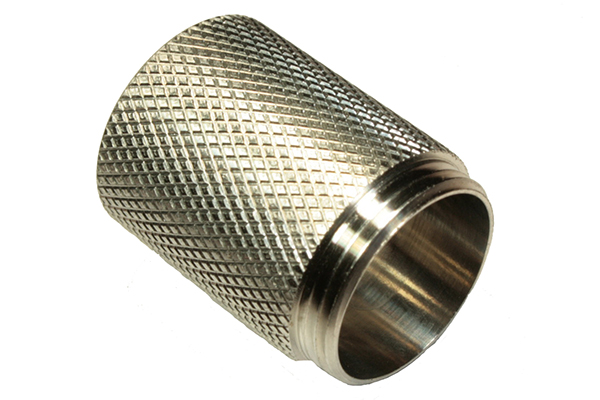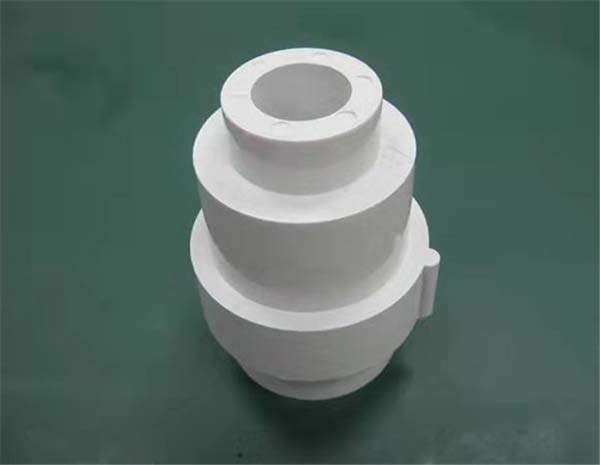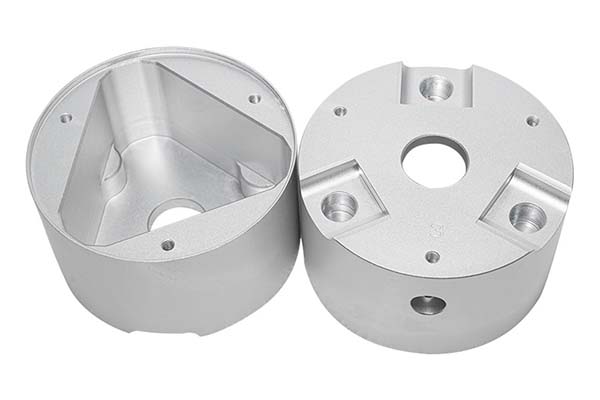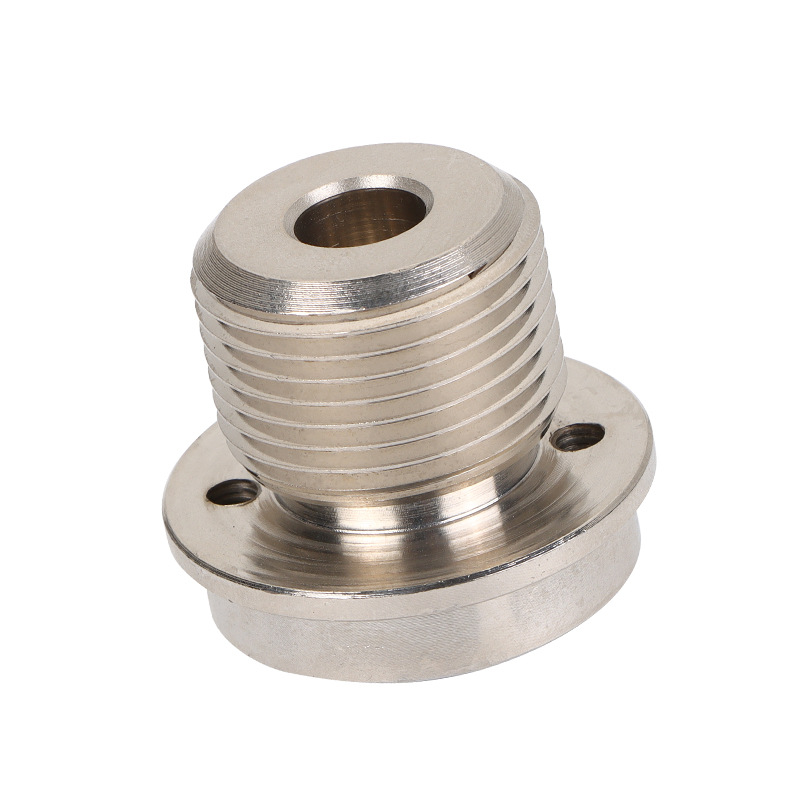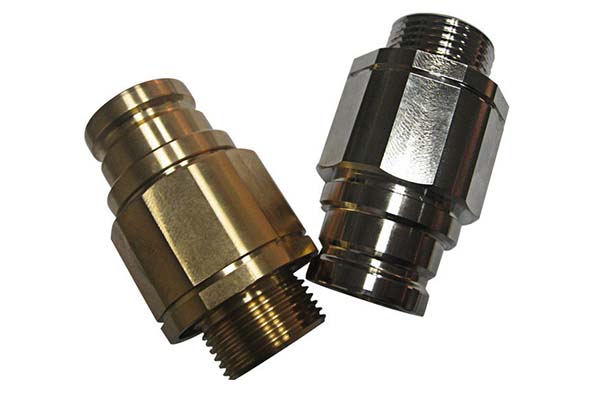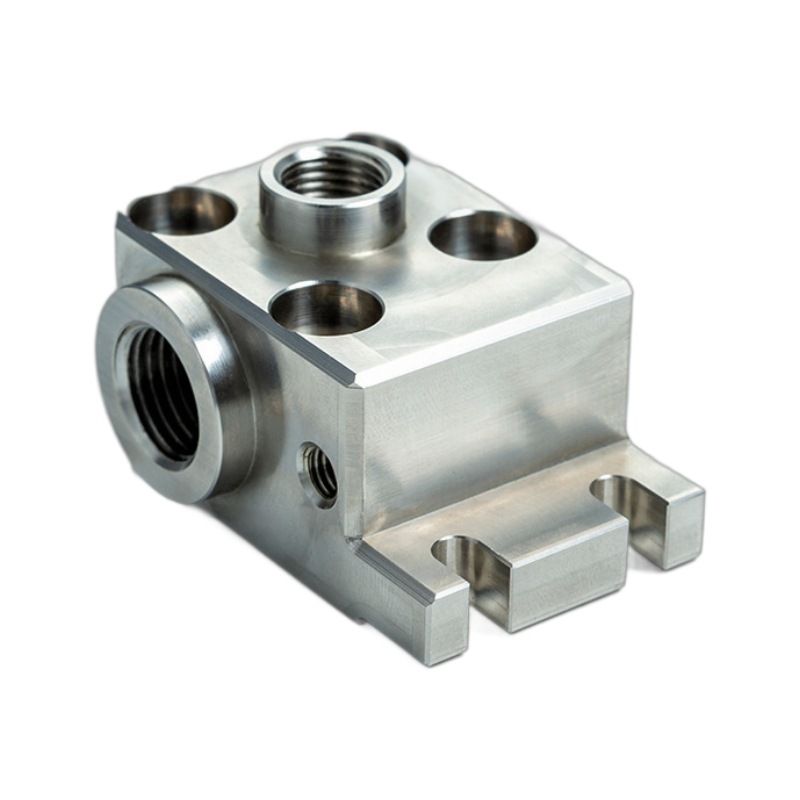In the highly competitive world of machining manufacturing companies, businesses face numerous challenges. From ensuring smooth company operations to delivering high - quality products on time, every aspect is crucial. Let's first understand the common pain points these companies encounter. High production costs, often due to inefficient management structures or sub - optimal financial planning, can eat into profits. Inconsistent quality, which may result from flawed machining processes or ineffective quality control measures, can lead to customer dissatisfaction and loss of business. Additionally, supply chain disruptions, such as delays in raw material sourcing or problems with inventory management, can halt production lines.
Company Operations: The Backbone of Success
Management Structure
A well - organized management structure is fundamental. In a study by McKinsey, companies with a clear and flexible management structure were 30% more likely to meet their production targets. A hierarchical structure might work well for large - scale machining manufacturing companies, where clear lines of command ensure efficient decision - making. For example, in a company that manufactures complex aerospace components, the management structure might have distinct levels for design, production, and quality control managers. Each level reports to a higher - up, ensuring that information flows smoothly and decisions are made promptly.
Financial Planning
Financial planning is another critical aspect. A machining manufacturing company needs to budget for various expenses, including the purchase of manufacturing equipment, employee salaries, and raw material procurement. According to a report by Deloitte, companies that engage in detailed financial planning are 25% more likely to achieve long - term profitability. For instance, a company planning to invest in new CNC machines should consider not only the purchase cost but also the costs of installation, maintenance, and training for employees to operate the machines.
Operational Efficiency
Operational efficiency can make or break a machining manufacturing company. Lean manufacturing principles can be highly effective here. By eliminating waste, such as overproduction, waiting times, and unnecessary transportation of materials, companies can significantly reduce costs. Toyota, a pioneer in lean manufacturing, reduced its production lead time by 50% through the implementation of lean principles. In a machining context, this could mean organizing the factory floor in a way that reduces the distance materials need to travel during the machining process.
Corporate Culture
Corporate culture also plays a role in company operations. A positive corporate culture that values innovation, teamwork, and continuous improvement can boost employee morale and productivity. A survey by Gallup found that employees in companies with a strong positive culture are 87% less likely to leave. In a machining manufacturing company, this could translate to a more stable workforce, which in turn leads to better - trained employees and higher - quality output.
Strategic Planning
Finally, strategic planning is essential for long - term success. A machining manufacturing company needs to plan for future growth, new product lines, and market expansion. For example, a company that specializes in precision machining for the medical device industry might plan to enter the automotive precision machining market in the next five years. This would involve market research, investment in new equipment or technology, and talent acquisition.
Machining Processes: Precision is Key
Precision Machining
Precision machining is at the heart of many machining manufacturing companies. In industries like aerospace and medical, where even the slightest deviation can have catastrophic consequences, precision is non - negotiable. For example, in the production of jet engine components, parts need to be machined with tolerances as small as a few micrometers. Advanced CNC machines are often used in precision machining. These machines can follow complex computer - aided design (CAD) models to create highly accurate parts.
CNC Milling
CNC milling is a widely used machining process. It involves using a rotating cutting tool to remove material from a workpiece. CNC milling can create a variety of shapes, from simple flat surfaces to complex three - dimensional geometries. A study by Gardner Research found that companies that upgraded to modern CNC milling machines saw a 20% increase in machining accuracy and a 15% reduction in production time. For example, a company manufacturing custom - made molds for the plastics industry can use CNC milling to create intricate mold cavities with high precision.
Turning Operations
Turning operations are used to create cylindrical parts. In a lathe, the workpiece rotates while a cutting tool removes material to shape the part. This process is commonly used in the production of shafts, bolts, and other components with a circular cross - section. High - quality lathes can achieve very smooth surface finishes and tight tolerances. For example, in the manufacturing of automotive crankshafts, turning operations are crucial to ensure the proper fit and function of the component within the engine.
Grinding Processes
Grinding processes are used to achieve a high - quality surface finish and tight tolerances. It involves using an abrasive wheel to remove a small amount of material from the workpiece. Grinding is often used as a finishing process after other machining operations. In the production of optical lenses, grinding is used to shape the glass to the exact curvature required for proper light refraction. The use of advanced grinding machines can reduce the surface roughness of the lens to nanometer levels.
Sheet Metal Fabrication
Sheet metal fabrication involves cutting, bending, and joining sheet metal to create various products. This process is used in industries such as automotive, construction, and electronics. For example, in the automotive industry, sheet metal is used to create car bodies. Laser cutting machines are often used in sheet metal fabrication to achieve precise cuts. A company that specializes in manufacturing electronic enclosures using sheet metal can use computer - controlled bending machines to ensure consistent and accurate bends.
Manufacturing Equipment: The Tools of the Trade
Machine Tools
Machine tools are the basic building blocks of a machining manufacturing company. These include lathes, milling machines, and drill presses. High - quality machine tools are essential for achieving accurate and efficient machining. A study by AMT - The Association For Manufacturing Technology found that companies that invested in high - end machine tools saw a 30% increase in productivity over a five - year period. For example, a small - to - medium - sized machining shop that upgrades its old milling machine to a modern, high - speed model can take on more complex jobs and complete them in less time.
CNC Machines
CNC machines have revolutionized the machining industry. As mentioned earlier, they offer high precision and automation. CNC machines can be programmed to perform a series of machining operations without the need for constant operator intervention. This not only increases accuracy but also reduces labor costs. A large - scale machining manufacturing company that produces thousands of identical parts per day can rely on CNC machines to maintain consistent quality and high production rates.
Lathes
Lathes, as mentioned in the turning operations section, are an important type of manufacturing equipment. There are different types of lathes, such as engine lathes, turret lathes, and CNC lathes. Each type has its own advantages and is suitable for different applications. Engine lathes are more manual and are often used for small - batch production or for prototyping. Turret lathes, on the other hand, are more automated and can perform multiple operations in a single setup. CNC lathes offer the highest level of precision and automation and are ideal for mass production.
Milling Machines
Milling machines come in various types, including vertical milling machines, horizontal milling machines, and universal milling machines. Vertical milling machines are commonly used for machining flat surfaces and creating pockets and slots. Horizontal milling machines are better suited for machining long, cylindrical workpieces. Universal milling machines can perform a wide range of operations due to their versatility. A machining company that undertakes a variety of jobs, from small - scale prototype work to large - scale production, may invest in different types of milling machines to meet the diverse needs of its customers.
Grinding Machines
Grinding machines are designed specifically for grinding operations. There are surface grinders, cylindrical grinders, and internal grinders, among others. Surface grinders are used to grind flat surfaces, cylindrical grinders for cylindrical workpieces, and internal grinders for machining the inside of holes. High - end grinding machines are equipped with advanced features such as automatic dressing of the grinding wheel, which ensures consistent grinding performance over time. A company that specializes in manufacturing high - precision components for the semiconductor industry may rely on state - of - the - art grinding machines to achieve the required surface finishes and tolerances.
Quality Control: Ensuring Product Integrity
Inspection Methods
Inspection methods are crucial in quality control. Visual inspection is the simplest and most basic method, where an inspector examines the part for any visible defects. However, more advanced methods are often required. Non - destructive testing (NDT) methods, such as ultrasonic testing, X - ray testing, and magnetic particle testing, can detect internal defects without damaging the part. In the aerospace industry, where the safety of the aircraft is at stake, NDT methods are used extensively to inspect critical components. For example, ultrasonic testing can be used to detect cracks in the wings of an aircraft.
ISO Standards
Adhering to ISO standards is a sign of a quality - conscious machining manufacturing company. ISO 9001, for instance, is a widely recognized standard for quality management systems. Companies that obtain ISO 9001 certification demonstrate that they have a robust quality management system in place. This can enhance their reputation in the market and open up new business opportunities. A machining company that supplies parts to the medical industry may be required by its customers to have ISO 13485 certification, which is specific to the medical device industry.
Statistical Process Control
Statistical process control (SPC) involves using statistical techniques to monitor and control a manufacturing process. By analyzing data from the production process, such as dimensions of machined parts, SPC can detect when a process is going out of control. Control charts are commonly used in SPC to visualize the data. For example, a machining company that manufactures bolts can use SPC to monitor the diameter of the bolts. If the diameter starts to deviate from the specified tolerance, the company can take corrective action before a large number of defective bolts are produced.
Quality Assurance
Quality assurance is a comprehensive approach to ensuring that products meet the required quality standards. It includes activities such as quality planning, quality control, and quality improvement. A machining manufacturing company may have a dedicated quality assurance team that is involved in every stage of the production process, from the selection of raw materials to the final inspection of the finished product. This team may work closely with the design engineers to ensure that the product design is manufacturable with the required quality.
Calibration
Calibration of measuring instruments is essential for accurate quality control. Measuring tools such as micrometers, calipers, and coordinate measuring machines (CMMs) need to be calibrated regularly to ensure that they provide accurate measurements. A machining company that uses CMMs to inspect the dimensions of its machined parts must calibrate the CMMs at least once a year, or more frequently depending on the usage and the required accuracy. Calibration certificates should be maintained to demonstrate the accuracy of the measuring instruments.
Supply Chain Management: Keeping the Flow Going
Raw Material Sourcing
Raw material sourcing is the first step in the supply chain. A machining manufacturing company needs to source high - quality raw materials at a reasonable price. Establishing long - term relationships with reliable suppliers is important. For example, a company that manufactures stainless - steel components may have a preferred supplier of high - grade stainless - steel sheets. By working closely with the supplier, the company can ensure a consistent supply of raw materials and may also be able to negotiate better prices.
Inventory Management
Inventory management is crucial to avoid overstocking or understocking. Just - in - time (JIT) inventory management is a popular approach where raw materials are delivered to the production line just when they are needed. This reduces inventory holding costs. However, JIT requires careful planning and a reliable supply chain. A machining company that uses JIT inventory management may work with its suppliers to ensure that raw materials are delivered in small, frequent batches. On the other hand, some companies may maintain a safety stock of critical raw materials to mitigate the risk of supply chain disruptions.
Supplier Relationships
Supplier relationships go beyond just placing orders. A machining manufacturing company should collaborate with its suppliers to improve product quality, reduce costs, and innovate. For example, a company may work with its tooling supplier to develop new cutting tools that are more efficient for its machining processes. By sharing its production requirements and challenges with the supplier, the company can benefit from the supplier's expertise and resources.
Logistics
Logistics involves the transportation and storage of raw materials and finished products. Optimizing logistics can reduce costs and improve delivery times. A machining company may use a combination of different transportation modes, such as trucks, trains, and ships, depending on the distance and the urgency of the delivery. Warehousing should also be managed efficiently to ensure that raw materials and finished products are stored in a proper environment. For example, sensitive electronic components used in machining may need to be stored in a climate - controlled warehouse.
Just - in - Time Delivery
Just - in - time delivery is a key aspect of supply chain management. It ensures that finished products are delivered to the customers exactly when they are needed. This can improve customer satisfaction and reduce inventory costs for the customer. A machining company that supplies parts to an automotive assembly plant may need to adhere to strict JIT delivery schedules. To achieve this, the company may use advanced supply chain management software to track the production progress and coordinate with the logistics providers to ensure timely delivery.
Yigu Technology, as a plastic metal parts custom manufacturing Supplier, believes that in the machining manufacturing field, seamless integration of all these aspects is vital. For example, in our operations, we have a flat management structure that allows for quick decision - making. We invest significantly in R & D for our machining processes to ensure high precision. Our manufacturing equipment is regularly updated to meet the latest industry standards. In terms of quality control, we follow strict in - house procedures as well as international standards. In supply chain management, we have established strong relationships with our raw material suppliers to ensure a steady supply of high - quality materials. This holistic approach has enabled us to provide high - quality custom - made plastic and metal parts to our clients in a timely manner.
FAQs
1. How can a machining manufacturing company improve its operational efficiency without significant investment in new equipment?
A machining manufacturing company can improve operational efficiency by implementing lean manufacturing principles, such as reducing waste and optimizing workflow. Employee training to enhance skills and productivity can also be effective. Additionally, better supply chain management, like improving inventory control and supplier relationships, can lead to cost savings and increased efficiency.
2. What are the most common quality control issues in machining manufacturing, and how can they be addressed?
Common quality control issues include dimensional inaccuracies, surface finish problems, and material defects. Dimensional inaccuracies can be addressed by regular calibration of measuring instruments and strict process control. Surface finish problems can be mitigated by using the right cutting tools and optimizing machining parameters. Material defects can be reduced by working with reliable raw material suppliers and implementing strict incoming material inspection procedures.
3. How important is supply chain diversification for machining manufacturing companies?
Supply chain diversification is very important. It reduces the risk of disruptions due to factors such as natural disasters, political instability, or supplier bankruptcy. By having multiple suppliers for raw materials and components, a machining manufacturing company can ensure a continuous supply of inputs, maintain production schedules, and avoid costly downtime.
